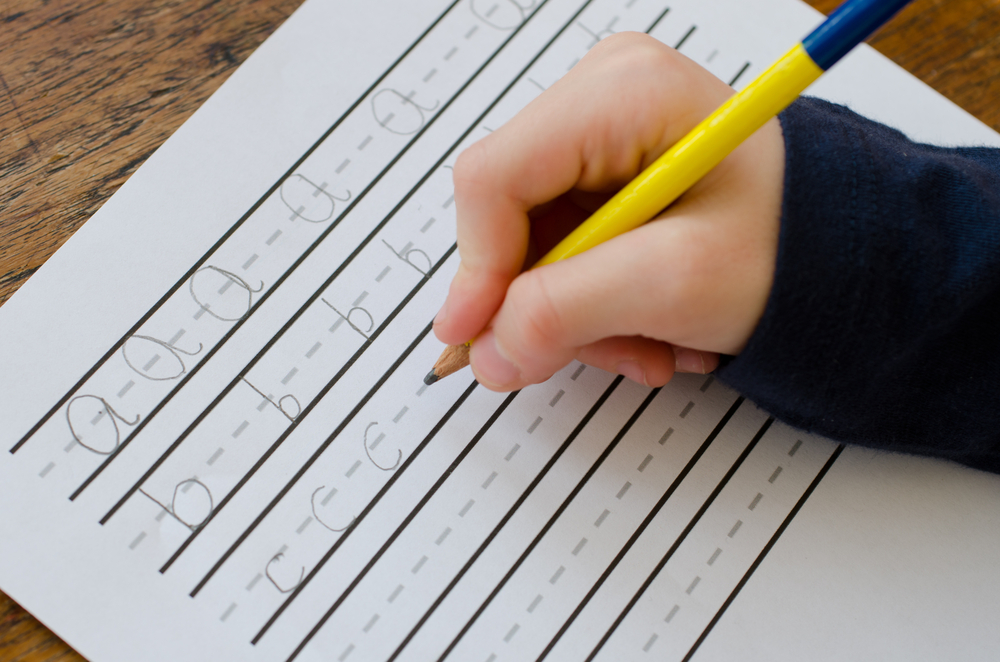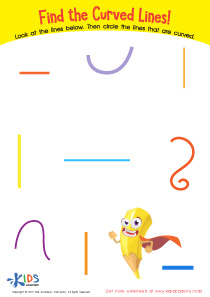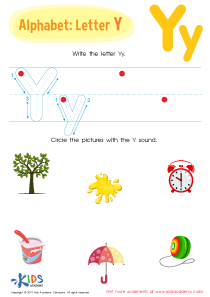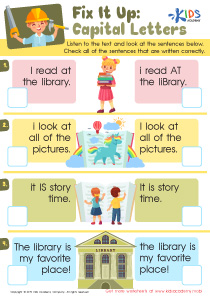Fine motor skills development Cursive Alphabet Worksheets for Ages 4-9
9 filtered results
-
From - To
Unlock the potential of your child’s handwriting with our Fine Motor Skills Development Cursive Alphabet Worksheets, designed specifically for ages 4-9. These engaging and educational worksheets are perfect for helping young learners master cursive handwriting while strengthening their fine motor skills. Each worksheet provides structured practice through fun tracing and writing exercises, promoting improved hand-eye coordination, precision, and control. Ideal for both classroom and home settings, these activities support your child’s overall development in a supportive, encouraging way. Discover an enjoyable path to beautiful handwriting and enhanced motor skills with our quality cursive alphabet worksheets.
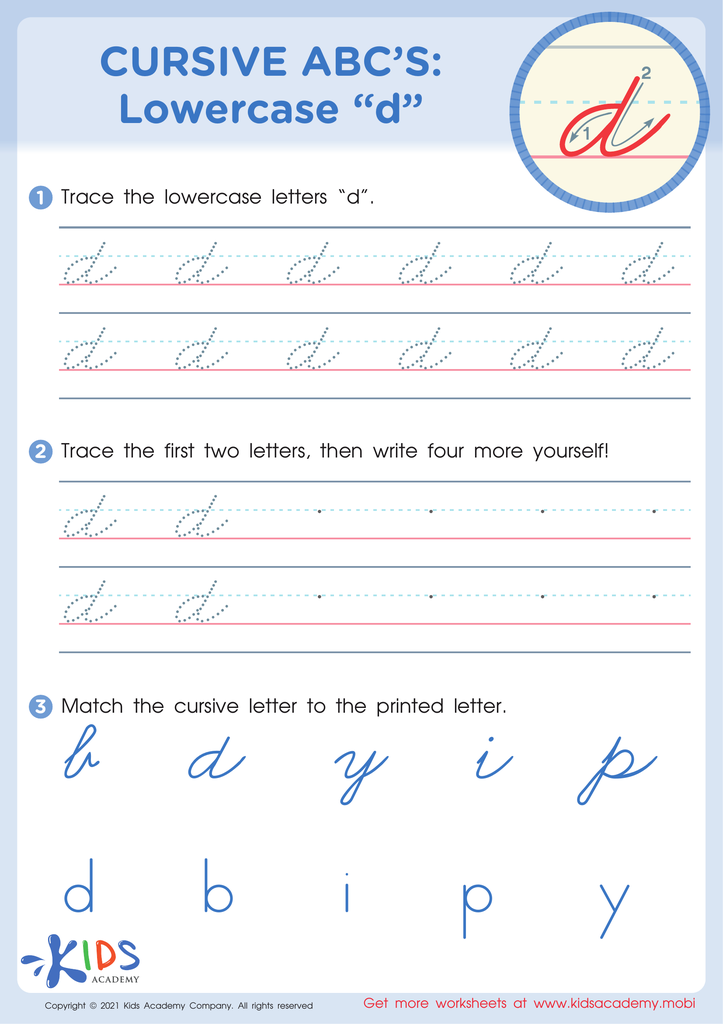

Cursive ABCs: Lowercase d
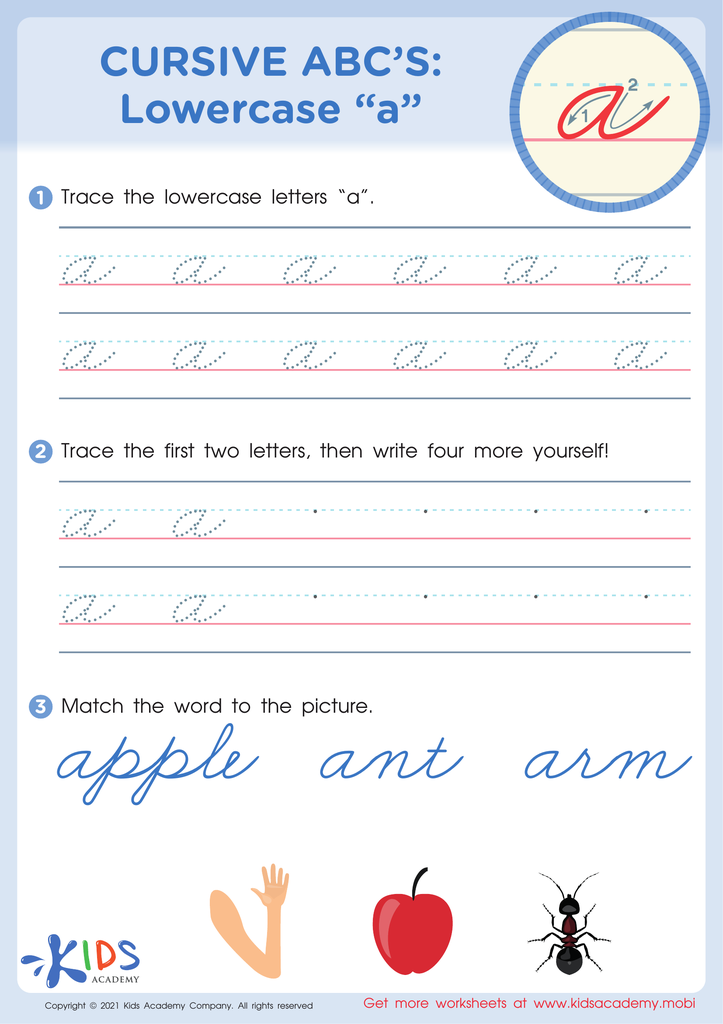

Cursive ABCs: Lowercase a
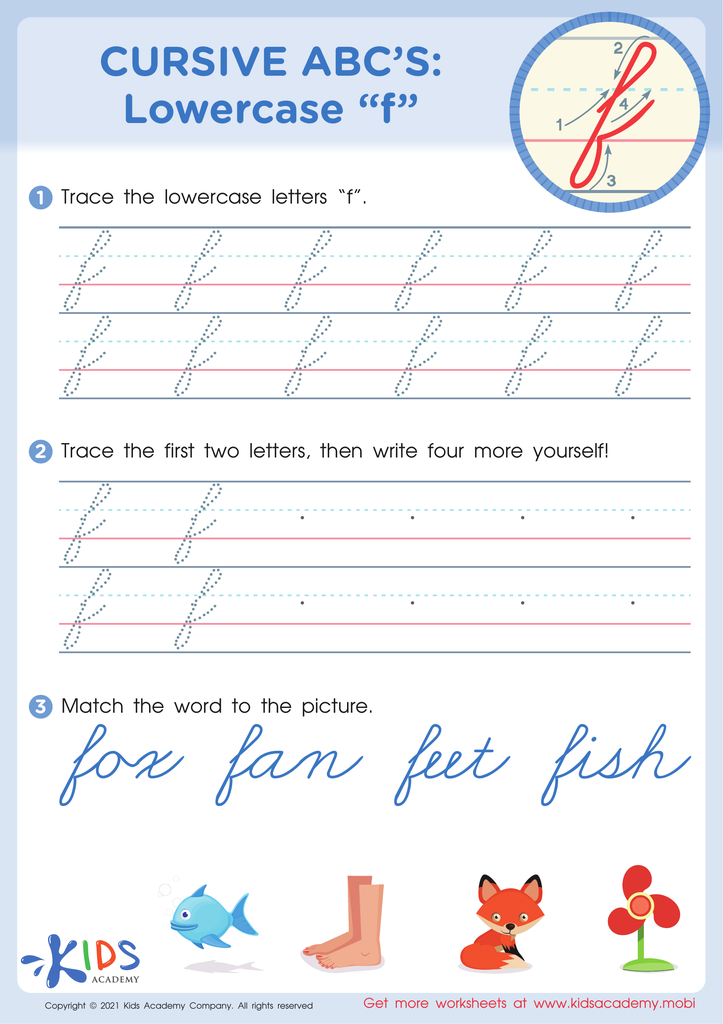

Cursive ABCs: Lowercase f
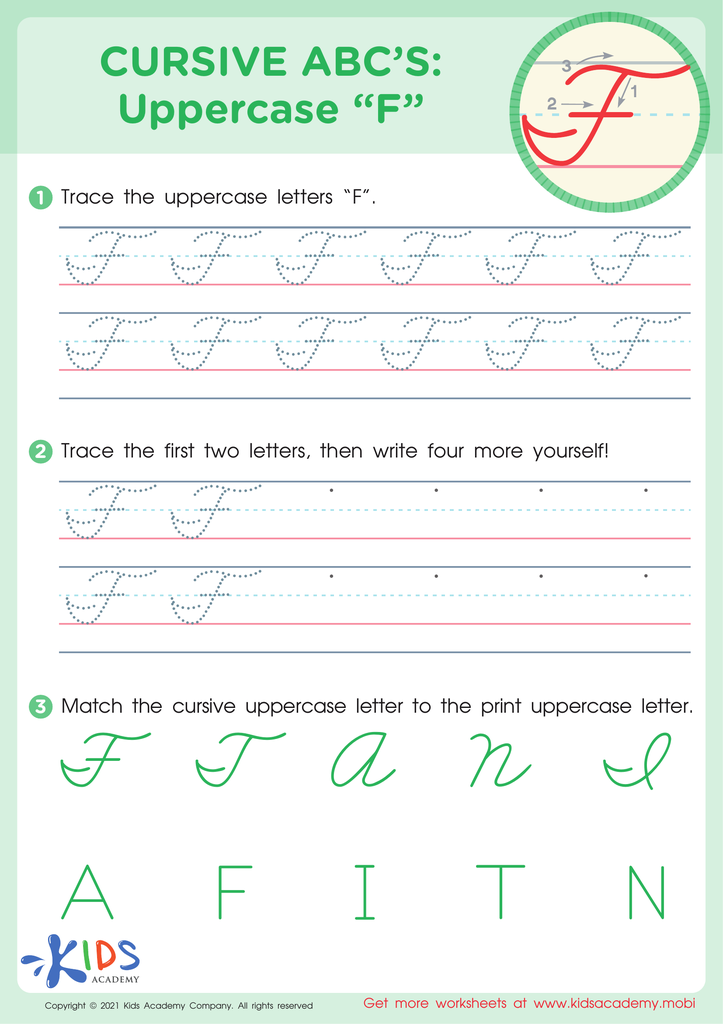

Cursive ABCs: Uppercase F


Cursive ABCs: Uppercase G
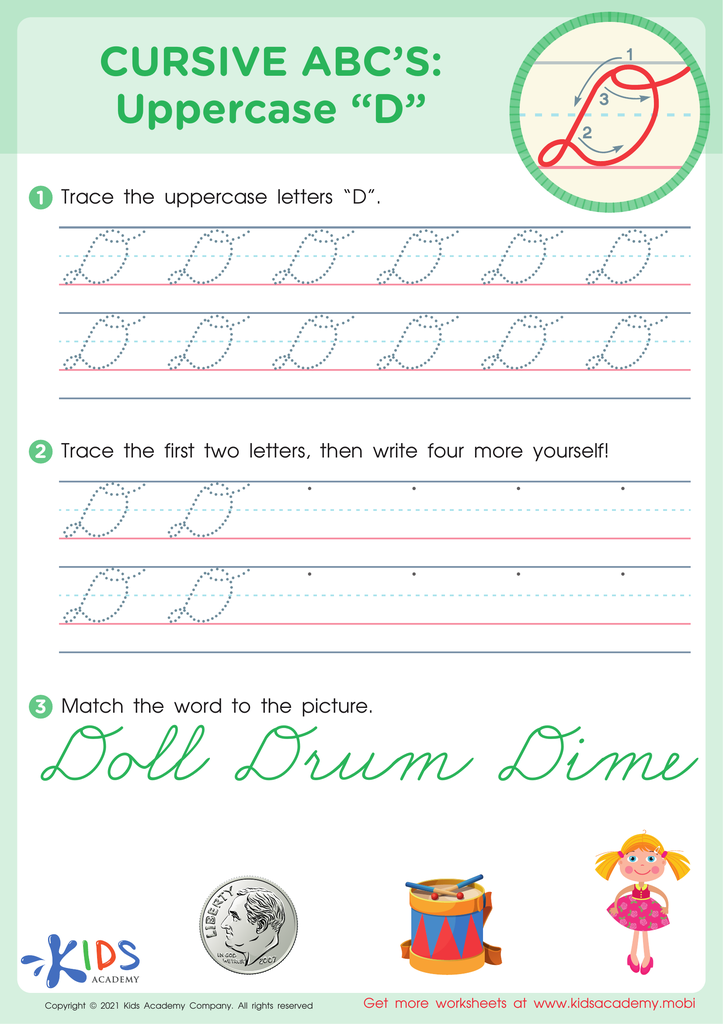

Cursive ABCs: Uppercase D
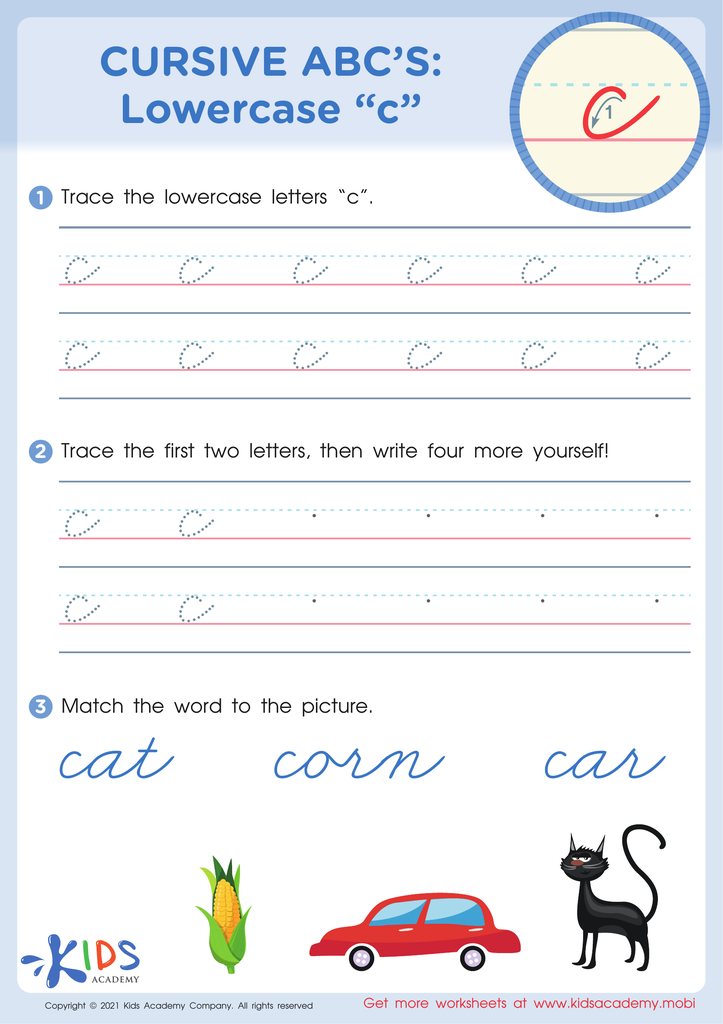

Cursive ABCs: Lowercase c
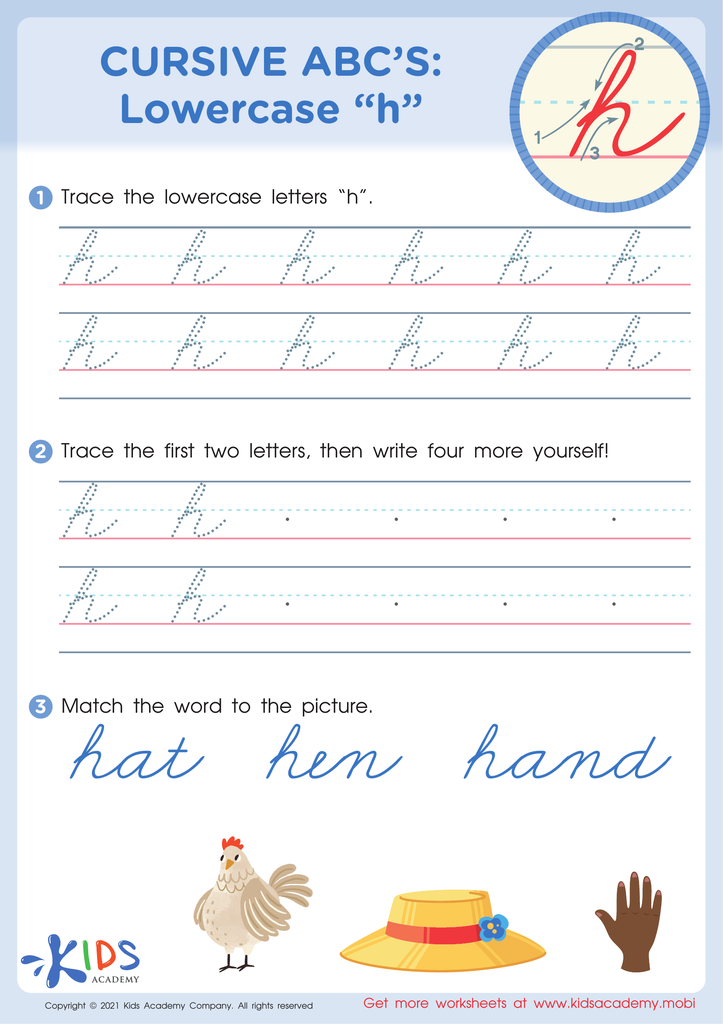

Cursive ABCs: Lowercase h
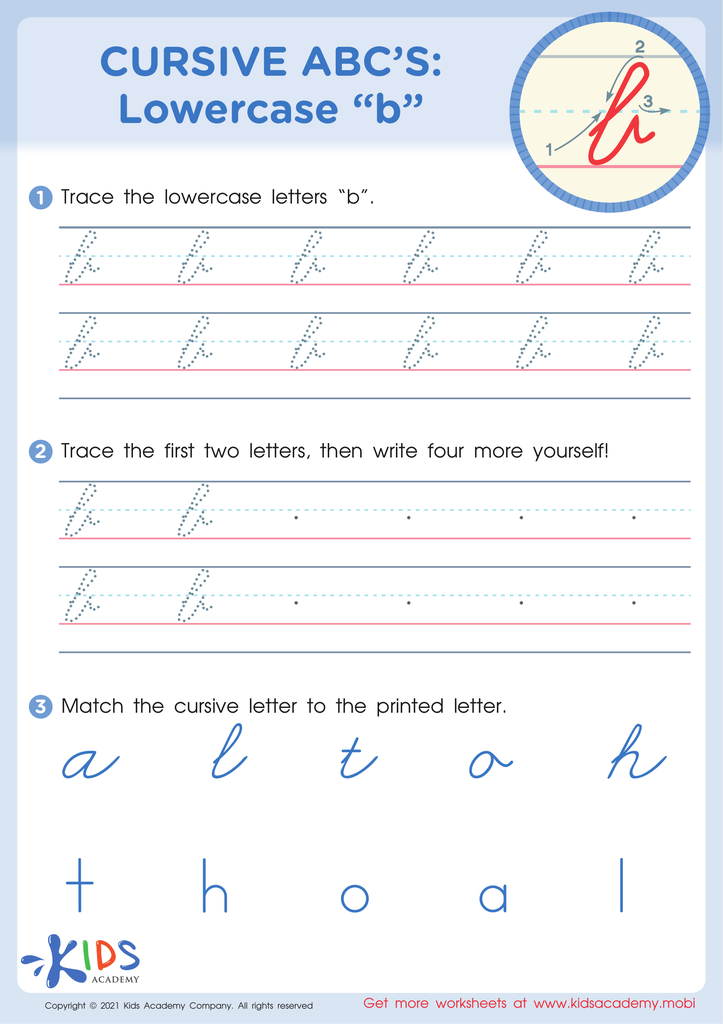

Cursive ABCs: Lowercase b
Fine motor skills are crucial for young children's overall development and directly influence their ability to succeed academically and in daily tasks. These skills involve the coordination of small muscles in the hands and fingers and are essential for tasks like writing, buttoning clothes, and using utensils.
Introducing cursive alphabet writing to children ages 4-9 can significantly enhance their fine motor skills. The continuous, flowing nature of cursive writing promotes better hand-eye coordination, dexterity, and muscle memory. As children practice forming loops and connecting letters, they strengthen their hand muscles and improve their control over pencil movements, laying a solid foundation for all future writing tasks.
Moreover, mastering cursive writing can boost children's confidence and self-esteem. As they see their progress, they feel a sense of accomplishment, which encourages a positive attitude toward learning and persistence in facing challenges. Additionally, learning cursive can enhance cognitive development by improving attention span and focus, as it requires concentration and precision.
Parents and teachers should prioritize fine motor skills development through cursive writing because it not only prepares children for academic tasks but also supports their independence in everyday activities. Investing in this aspect of child development sets the stage for future success, both in school and in life.


